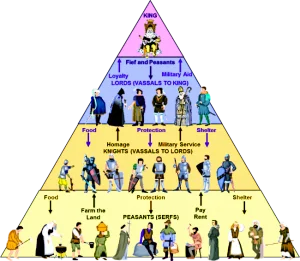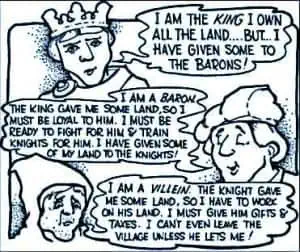In the medieval feudal system, serfs were unfree peasants bound to the land owned by a lord. They were not slaves, but neither were they free; instead, they held the possession (not the ownership) of small plots of land which they cultivated for their own survival. In return, serfs were required to render dues, most commonly through labour services on the lord’s demesne (the portion of land reserved for the lord’s direct use).
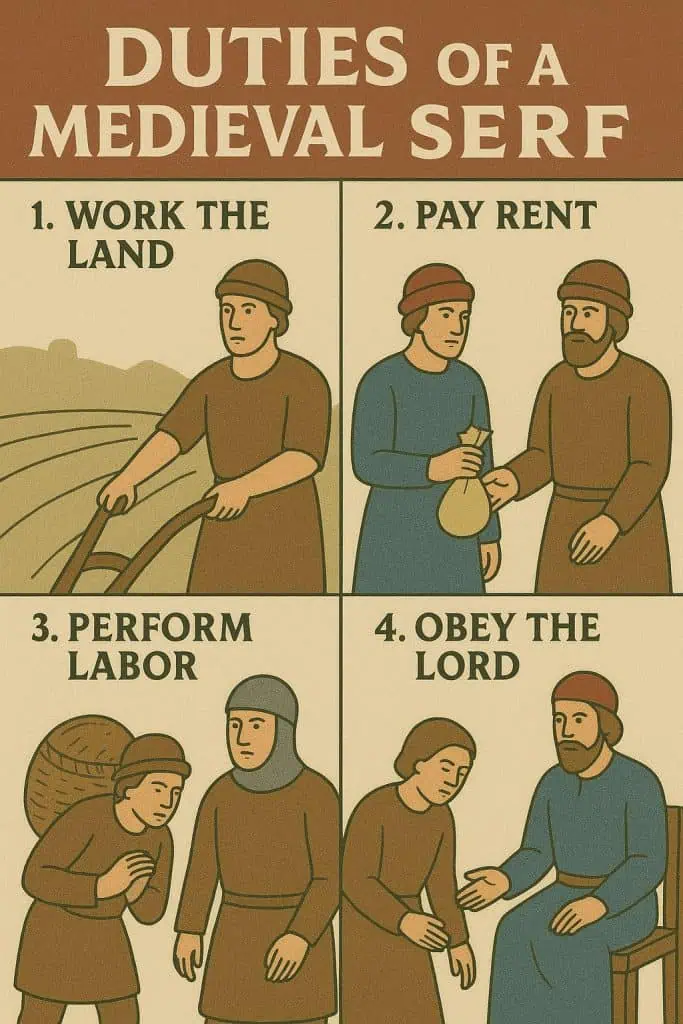
These obligations could also include payments in kind (such as crops, livestock, or goods) and, later on, money rents as economies developed. While serfs had limited rights and could not leave the land without the lord’s permission, they did enjoy a measure of protection and access to land, which was crucial in a largely agricultural society. This system tied the peasants and lords together in a network of mutual dependence, forming the backbone of medieval European society.

How Medieval Serfs Lived and Worked
Medieval serfs were agricultural peasants who engaged in labor on a lord’s estate, where they cultivated the land and tended to livestock. In return for their work and the right to use a portion of the land for their own sustenance, these serfs paid certain fees, which were often in the form of labor on the lord’s property. This labor could involve various tasks such as planting and harvesting crops, maintaining buildings, and caring for animals. The relationship between the serfs and the lord was quite complex, as it was rooted in a system of obligations and protections that shaped rural life during the Middle Ages.

Medieval serfs typically worked around three days each week on the lord’s land, engaging in various agricultural tasks that were essential for the sustainability of the estate. They were bound to a specific estate, which meant that they were not only tied to the land itself but also subjected to the whims and decisions of the landowner. This bond indicated that they could be sold along with the land in question when the property changed hands, without any consent or consideration for their individual circumstances. Consequently, their lives were deeply intertwined with the land, limiting their personal freedom and mobility while shaping the economic and social structure of the feudal system

The Lord and His Manor Estate
A lord’s land was referred to as a manor estate, which was a substantial and often sprawling area of land under the control of a noble. The lord resided in a grand and impressive house situated on the estate, commonly known as the manor house. This prominent figure, referred to as the Lord of the Manor, not only managed the estate but also held significant authority over the lands and the people living within them. The manor estate typically included farmland, meadows, and sometimes even woodlands, all of which were crucial for the lord’s wealth and the sustenance of his household.

The Powerful Lord
The lord of the manor held a variety of specific rights and privileges over the medieval serfs and other small landowners who resided on their lands. This included the essential authority to resolve disputes that arose among the tenants, ensuring that order and harmony were maintained within the manor. Additionally, the lord possessed the exclusive right to hunt within the estate’s boundaries, allowing him to partake in this favored pastime and gather food for himself and his household, which further reinforced his status and power within the feudal system.
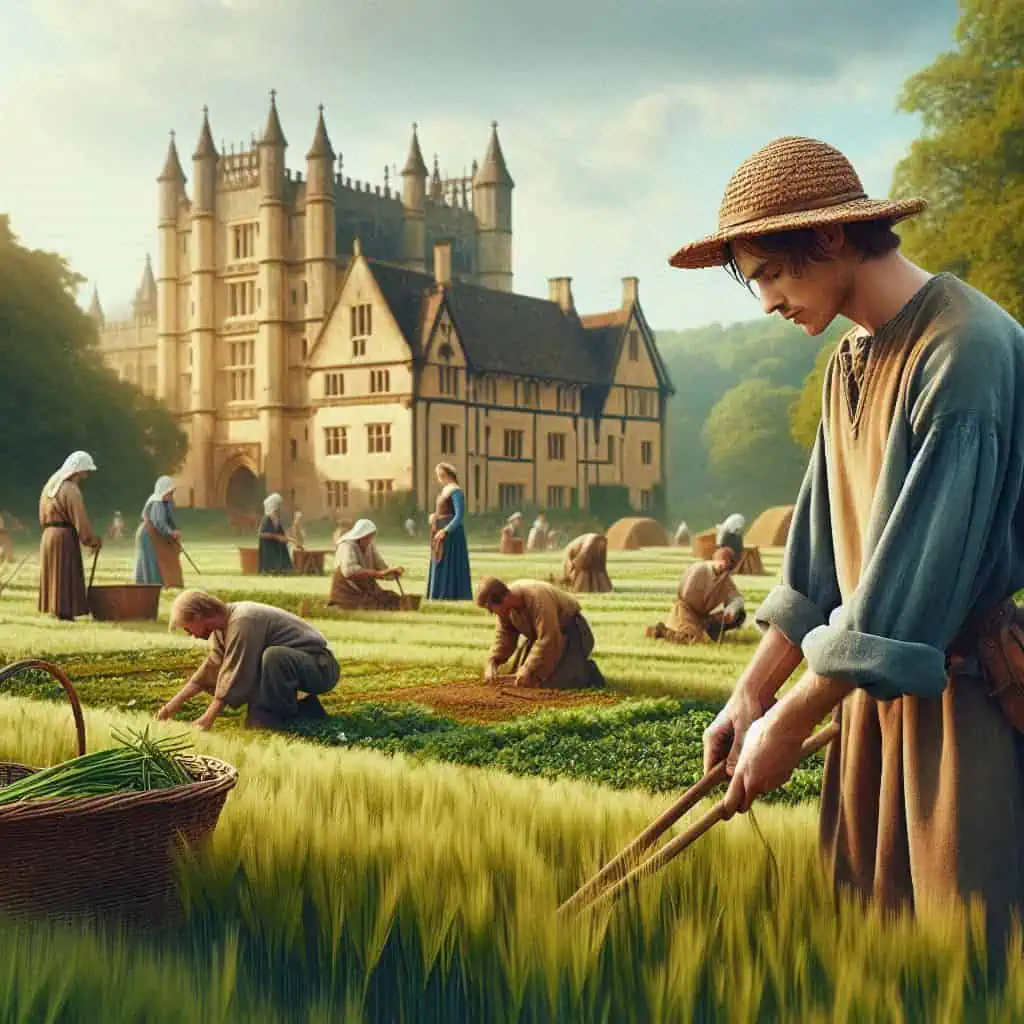
Payments and Obligations of Medieval Serfs
In addition to providing labor, medieval serfs were often required to make payments in kind to their lord. These payments could include grain, eggs, honey, or other farm produce. For example, a serf might have to give a portion of their wheat in order to use the lord’s mill for grinding. Such obligations were a key part of the manorial system, ensuring the lord received resources to sustain his household and maintain the estate. These dues, combined with labor services, tied serfs closely to the land and reinforced the hierarchical structure of medieval society.
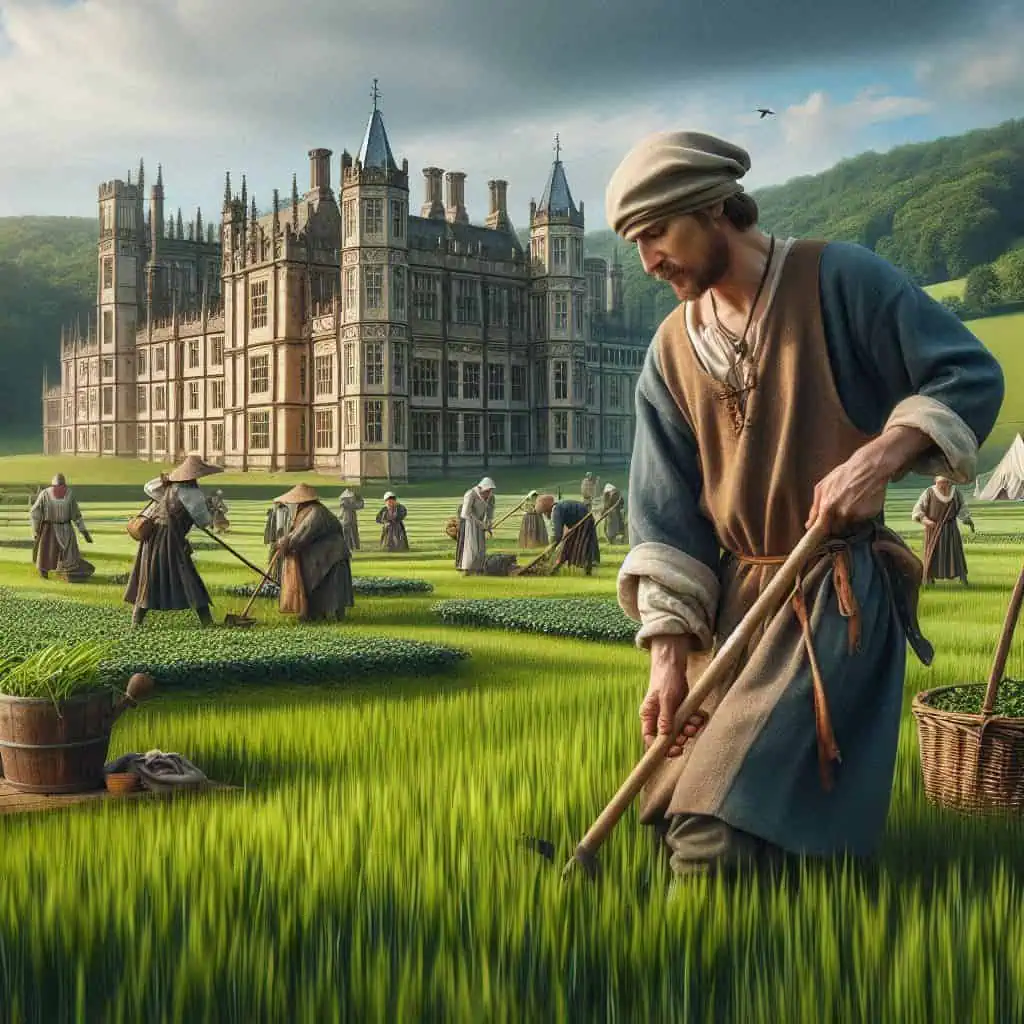
How Medieval Serfs Earned a Living
A medieval serf’s livelihood largely depended on the small income or allowances provided by their lord as a reward for laboring on the lord’s land. This payment was usually modest, barely enough to cover the serf’s basic needs. In addition to money, serfs sometimes received assistance in the form of grain, wheat, or other foodstuffs, but such support was irregular and limited. As a result, most serfs lived a simple, frugal life, relying on their own small plots of land to grow food and sustain their families. Despite the hardships, these earnings and provisions were essential for survival within the manorial system of medieval Europe.

Home Life of Medieval Serfs
A typical medieval serf lived in a cruck house, a small and simple dwelling constructed from wood, wattle, and daub, with additional materials such as twigs, straw, and mud. These homes had thatched roofs and very minimal furniture, reflecting the serfs’ modest means. A central hearth served as the heart of the home, used for both cooking and heating, while a small hole in the roof allowed smoke to escape. Life inside these homes was spartan and functional, focused on meeting basic survival needs, yet they provided a place of shelter and family life within the manorial system.
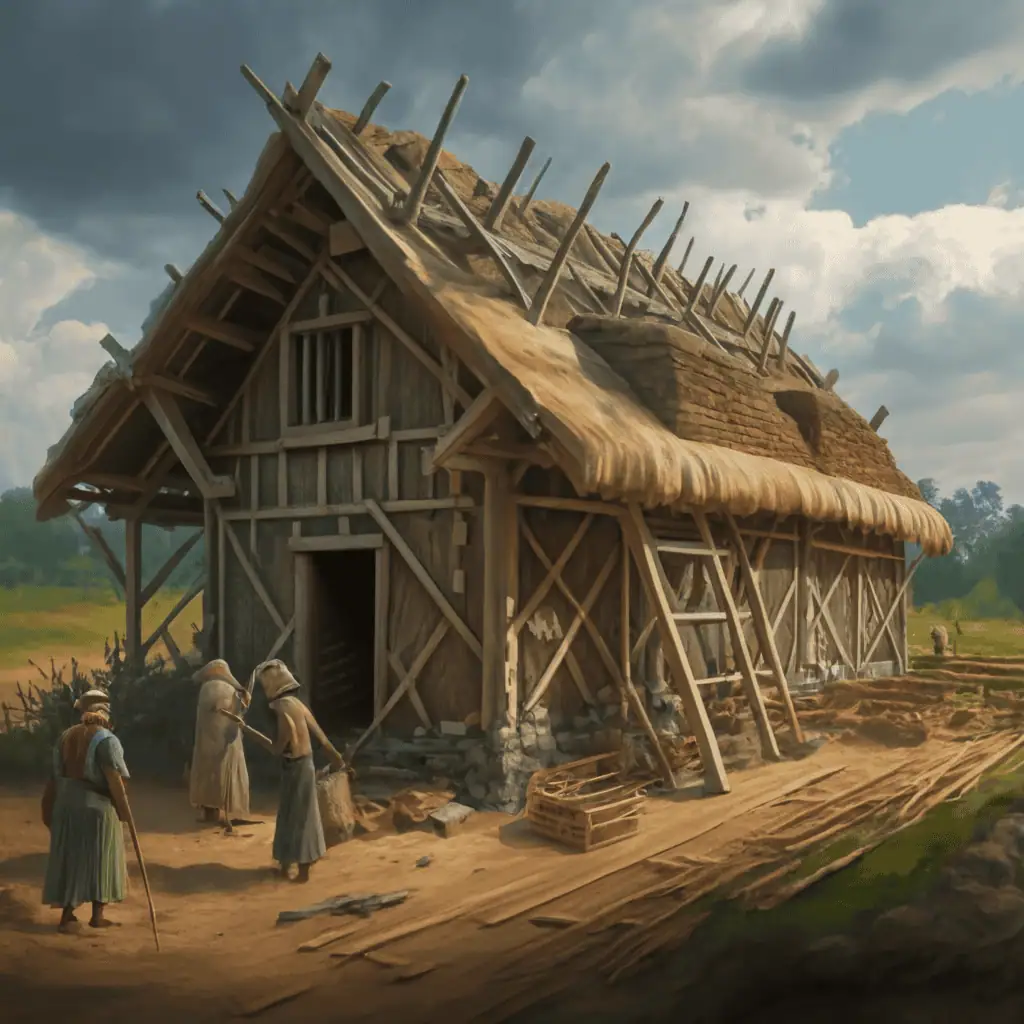
Social Status of Medieval Serfs
In medieval society, serfs occupied the lowest rung of the social hierarchy, just above slaves. They rarely owned land and had very little social prestige or legal rights. Serfs could be transferred or sold along with the land they worked, often without their consent, making their status almost comparable to slavery.
Despite these limitations, serfs were typically allocated small plots of land to cultivate for their own use. Over time, a serf could buy their freedom if they managed to save enough money, with the ultimate achievement being to become a freeman. Additionally, a serf who remained in the lord’s favor and worked diligently might inherit the right to use their landholding, which could be passed down to children. While they would never truly own the land, these rights provided a measure of security and continuity for their family within the manorial system.

Medieval Peasant Attire
The attire of a medieval serf was typically composed of a cloth or leather blouse, which was secured at the waist with a durable leather belt for practicality and ease of movement. In addition to the blouse, he often donned woolen trousers that provided warmth and durability, paired with sturdy boots designed for rugged, daily labor. These boots were essential for traversing the often uneven and muddy terrain of medieval farms and villages. Furthermore, a heavy wool overcoat was frequently a vital part of his wardrobe, offering additional protection against the elements and ensuring that the serf could withstand the harsh winters while working outdoors. Overall, the clothing of a serf was functional, designed to meet the demands of their labor-intensive lifestyle.
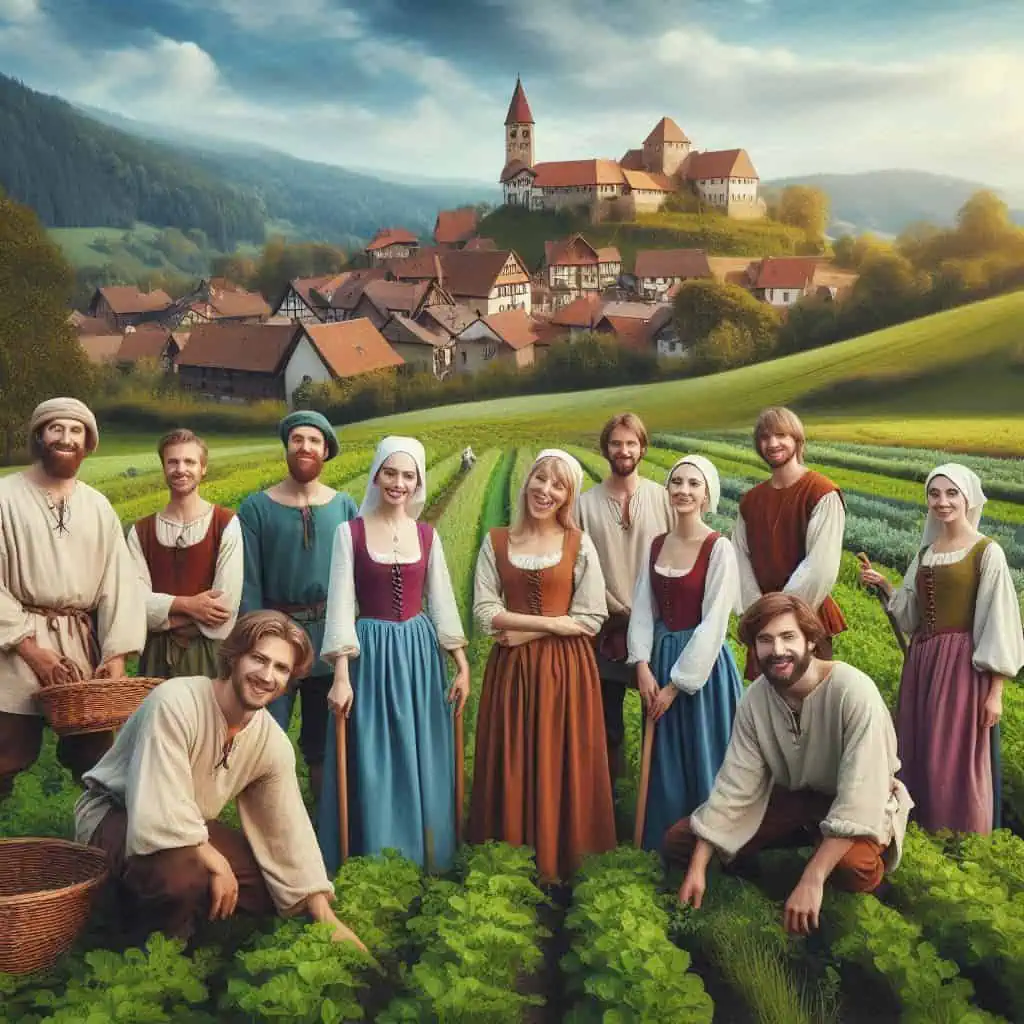
Summary: Life of a Medieval Serf
The life of a medieval serf was hard and restricted, with very little social status or personal freedom. Serfs did not own land; instead, they worked on the lord’s estate, performing labor in exchange for a small payment or occasional food provisions. They typically lived in cruck houses made from wood, wattle, daub, and straw, with minimal furniture and a simple hearth for cooking and warmth. Daily life was physically demanding and frugal, but despite these hardships, serfs played a crucial role in sustaining the manorial system and the broader medieval economy.
Who were medieval serfs?
Medieval serfs were peasants bound to the land of a lord under the feudal system. They were not slaves, but they were not free either. Serfs worked the land to produce food and also provided labor services, dues, or rents in exchange for protection and the right to farm small plots for their families.
What were the duties of a medieval serf?
A serf’s main duties included working the lord’s fields (the demesne), maintaining roads, fences, and buildings, and sometimes giving a portion of their harvest or livestock as taxes. They also owed corvée labor, meaning several days of unpaid work each week on the lord’s land.
What rights did serfs have in medieval Europe?
While serfs were bound to the land, they did have limited rights. They could farm their own plots for food, pass land use rights to their children, and receive the lord’s protection during times of war. However, they could not freely leave the manor without the lord’s permission.
What were the different names for a medieval serf or types of peasants?
Medieval peasants went by different names depending on their legal status. The main categories included:
Serfs – bound to the land and lord.
Villeins – similar to serfs but sometimes with more privileges.
Cottars or Cottagers – peasants who held very small plots of land.
Freemen – peasants who paid rent but were not legally bound to the land.
How was a serf different from a slave?
Unlike slaves, serfs could not be bought or sold individually; they were tied to the land. If the land was sold, the serfs remained on it. Slaves were considered property with no rights, while serfs had limited customary rights and some control over their lives.
Why was the serf system important in medieval Europe?
The serf system formed the backbone of medieval agriculture and society. Serfs provided the labor that sustained the manorial economy, while lords offered protection. This mutual dependence was central to the functioning of feudalism across Europe.

